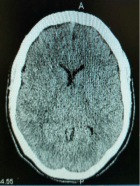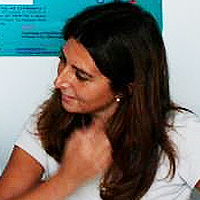Table of Contents
A Short communication on Pichia pastoris vs. E. coli: Efficient expression system
Published on: 29th September, 2021
OCLC Number/Unique Identifier: 9278269516
One of the major challenges for vaccine producing companies is having favourable conditions for efficient expression system for living organisms in order to produce biologicals. Several companies across the globe looking for several alternative sources for better yield through efficient expression based system.
The dermatologic manifestations of COVID-19: a mini-review
Published on: 27th August, 2021
OCLC Number/Unique Identifier: 9244773760
Severe acute respiratory syndrome coronavirus 2 (SARS-CoV-2), was identified in Wuhan, China, and caused coronavirus disease-19 (COVID-19), which is still a global pandemic. Dermatologic manifestations have increasingly been identified as significant extrapulmonary manifestations of COVID-19. The dermatologic manifestations associated with COVID-19 infection reported to date include maculopapular rash, vesicular lesions, urticaria-like lesions, and chilblain-like lesions. Knowledge of dermatologic manifestations of COVID-19 may be essential for early diagnosis and a better prognosis in COVID-19 patients. This review summarizes the current understanding of common COVID-19-associated dermatologic manifestations.
The SARS CoV-2 spike domain, RGD and integrin binding effect-relationship for vaccine design strategy
Published on: 20th July, 2021
OCLC Number/Unique Identifier: 9244748101
Related the need to search new strategy in vaccine design in order to reduce also some rare effect like trombosys for some registered products it is interesting the role played by the SPIKE RGD domain.
The binding with molecules like Fibronectin is a process that must to be deeply investigated.
A better understanding in this process can be used to improve safety of the new generation of COVID vaccine.
The rare effect like thrombosis recognized by regulatory agency produced a modification of technical data sheet of some vaccine so the phenomena Is interesting to be more investigated.
Spike protein and its domains are involved in producing pathological effect of the COVID-19 disease.
What it is interesting is that some pathological effect of this pathology are similar to some rare side effect produced by some COVID-19 vaccine classes.
After a review of interesting literature related this topics is submitted an experimental projects able to verify in vitro the spike procoaugulant property.
Pigeonpea sterility mosaic virus a green plague-Current status of available drug and new potential targets
Published on: 14th June, 2021
OCLC Number/Unique Identifier: 9124811236
Pigeonpea is one of the important legume crops with high protein content and nutritional traits. It has enormous potency for its widespread adoption by farming communities. It is affected by various kinds of biotic and abiotic stresses. In the context, of biotic stresses Sterility mosaic disease (SMD) is one of the severe diseases in pigeonpea which ultimately lead to the drastic yield loss. The virus belongs to the genus Emaravirus, family- Fimoviridae. SMD is associated with two diverse types of Emaravirus, Pigeonpea sterility mosaic virus1 (PPSMV-1) and Pigeonpea sterility mosaic virus 2 (PPSMV-2). It is transmitted by the mite (Aceria cajani), mainly environmental contributing to the feasibility for the mites for the inoculation of the virus. The SMD is mainly governed by two genes SV1 that includes the dominant allele and serves as an inhibitory action on the resistance of the SV2. Methods for identification of the virus include RT-PCR, DIBA and ELISA using alkaline phosphatase or penicillinase. To control SMV disease farmers generally adopted intercropping methods. There are few potential drugs have been identified for the administration of the disease such as 0.1% Fenazaquin, Dicofol, Imidacloripid, Carbosulfan; Spiromesifin includes the inhibition of the mite inoculation on the pigeonpea plant. The present review describes compressive and systematic insights on SMV protein targets and potential drugs that could be utilized as the presumed drug targets for the finding of true drugs against the SMD in pigeonpea.
Role of toll-like receptors and their ligands in adipocyte secretion
Published on: 8th April, 2021
OCLC Number/Unique Identifier: 9031345560
Background: Adipose tissue is one of the main sites of energy homeostasis that regulates whole body metabolism with the help of adipokines. Disruption in its proper functioning results in adipose tissue remodeling (primarily hypertrophy and hyperplasia) which directly influences the secretion of said adipokines. Obesity characterized as chronic low-grade inflammation of the adipose tissue is one such condition that has far reaching effects on whole body metabolism. Inflammation in turn results in immune cells infiltrating into the tissue and further promoting adipocyte dysfunction.
Purpose: In our study we explored this adipose tissue-innate immunity axis by differentiating adipose tissue derived stem cells (ADSCs) into white and beige adipocytes. We further stimulated our cultures with lipopolysaccharide (LPS), flagellin, or meteorin-like, glial cell differentiation regulator (METRNL) to trigger an inflammatory response. We then evaluated Toll-like receptor (TLR) mRNA expression and secretion of interleukin (IL-6), interleukin-8 (IL-8), brain-derived neurotrophic factor (BDNF), and nerve growth factor (NGF) in these cultures.
Results: We found that TLR2 is the highest expressed receptor in adipocytes. Further, LPS and METRNL are strong activators of TLR2 in white and beigeBMP7(-) adipocytes. TLR4 was not significantly expressed in any of our cultures despite LPS stimulation. TLR9 expression is upregulated in ADSCs upon LPS and METRNL stimulation. IL-6 and IL-8 secretion is increased upon LPS stimulation in white adipocytes. METRNL activates both IL-6 and IL-8 expression in adipocyte cultures. Lastly, BDNF and NGF is secreted by all adipocyte cultures with beigeBMP7(-) and beigeBMP7(+) secreting slightly higher amounts in comparison to white adipocytes.
Conclusion: ADSCs and adipocytes alike are capable of expressing TLRs, but white adipocytes remain the highest expressing in both control and stimulated cultures. TLR2 is highly expressed in white and beige adipocytes whereas TLR4 showed no significant expression. LPS and METRNL trigger IL-6 and IL-8 secretion in adipocytes. Products of white adipocyte “browning” are capable of secreting higher amounts of BDNF and NGF in comparison to white adipocytes.

If you are already a member of our network and need to keep track of any developments regarding a question you have already submitted, click "take me to my Query."

















































































































































